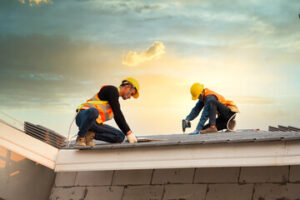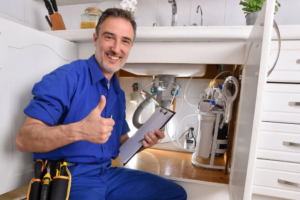Plumbers Sarasota install and repair the pipes that bring water and waste to and from homes and businesses. They also work with fixtures and appliances like sinks, toilets, and showers. They must be able to read and interpret blueprints and building codes when installing new systems.

Many plumbers also work on gas lines, so they need to be knowledgeable about safety protocols and regulations. They must also be able to use hand tools and power equipment safely.
A stuck faucet handle is a common problem that often has simple solutions. Mineral buildup and a little bit of friction inside the handle can make it hard to turn. Vinegar and plumber’s grease can dissolve the buildup and lubricate the moving parts, which will loosen the handle. If the handle is still hard to turn, a little bit of force can help. First, shut off the water supply valve under the sink to stop the flow of water. Then, open the drain to clear out any water that may be in it. You should also place a bucket or towel beneath the faucet to catch any water that might spill while you work.
Using a screwdriver or an Allen wrench, remove the decorative cap, button, or plug at the top of the faucet handle that conceals a set screw. There will probably be a similar cap on the bottom of the faucet handle. Once the handle is removed, remove the escutcheon ring, which is usually held in place by two arms on a plastic retainer. The escutcheon ring is often hopelessly jammed into the faucet column, but you should be able to remove it by putting in some effort.
Now that the handles and escutcheon are out of the way, you can remove the mounting nuts that hold the faucet body in place. There are often two of these, one at each handle location and another at the spout. These may be very tight, so use a basin wrench to remove them. Be careful not to drop the body of the faucet on its side, which could crack or dent the sink.
If the spout nut is very tight, you can spray it with penetrating oil before turning it counter-clockwise with your basin wrench. You might have to repeat this step several times. The spout nut is usually threaded on both sides and can be difficult to remove, especially after years of use. Once it is removed, you should be able to pull the faucet straight up and out of the sink.
Remove the Handle
If the handle is stuck or difficult to remove, it may be a sign of mineral deposits or corrosion. Clean the cartridge or stem valve to remove these contaminants, and then loosen the packing nut. If the handle still won’t budge, try tapping it with a mallet or hammer while prying upward. If this is ineffective, you can spray the fixture with penetrating oil like WD-40 and let it soak for a while to loosen it up. This technique can also seep into tight crevices and loosen stubborn handle parts. Repeat as needed until the handle comes off.
Once the handle is removed, inspect the O-ring for damage or pitting. If necessary, replace the O-ring with a new one of the same size and coat it in plumber’s grease to protect it from corrosion.
Remove the Packing Nut
A leaking shutoff valve is often the result of a loose packing nut. This is easy to fix if you are careful and have the right tools.
A packing nut is a small, hexagonal hardware piece threaded onto a plumbing shaft. Its purpose is to secure packing, which creates a tight seal in plumbing. The nut provides constant pressure on the packing, so it must be tightened to prevent leaks. A loose nut can be fixed by turning the nut counter-clockwise with a wrench. A new washer can be purchased at a local Littleton hardware store for less than $1, so this is not a repair that requires professional plumbers.
If the leaking is occurring around the handle, you should turn off your water supply first. This is usually done at the valve in your basement or crawlspace, and it will be labeled. Then, remove the faucet handle by unscrewing the screw that holds it in place. This will expose the nut that needs to be tightened.
Once the nut is exposed, use an adjustable wrench to tighten it. Do not tighten it all the way, but make sure that it is snug. Turning the nut only a quarter turn should stop most shutoff valve leaks. If it does not, try another turn or two. If you continue to have a problem, your shutoff valve may need to be replaced entirely.
Leaking can also be caused by corrosion, which can eat away at the inside of the valve. If you have tried everything to tighten the nut and it still doesn’t work, you might need to replace the valve. A professional plumber can install a new valve if the old one is damaged beyond repair.
A leaking shutoff valve is almost always an easy problem to fix at home, especially if you are careful and have the right plumbing tools. This is a simple project that can be completed in a few minutes, and it will save you money on utility bills. If you are not confident about your DIY skills, or if the leaking is extensive, contact Team Balkan for professional assistance.
Reassemble the Faucet
After replacing or repairing any worn parts, it’s time to reassemble the faucet. Turn on the water and test for leaks. If the new valve doesn’t work properly, shut off the water supply again and flush the entire system by opening the water valves and running the handle several times to wash away debris that may have accumulated.
For cartridge or disk-type faucets, you’ll need to remove the handle to get to the screw that holds it in place. Pry off the decorative cap or use a utility knife to expose the screw, then unscrew it with a wrench or screwdriver. Once the handle is removed, loosen the packing nut with a wrench or large slip-joint pliers and pull the stem out of the valve body. If your cartridge is defective, replace it with a new one or clean and inspect the ceramic disks for damage or clogging.
With compression-type faucets, you’ll need the same tools to disassemble the handle and access the screw that holds it in place. Then you’ll need to remove the valve seat washer and replace it. Coat the new washer with nontoxic, heat-proof plumber’s grease. Once the valve is open, remove the stem and washer and then screw in the new stem assembly.
Before reassembling, replace the O-rings in the handle and the spout sleeve. Make sure the sleeve is in the right place, with its groves facing up against the washers to prevent water from seeping out of the spout when the handle is closed. Once the spout sleeve is back in place, you can put the handle back on and reinstall the aerator.
If you’re using a new cartridge, it should come with a plastic spanner cap that helps you align the brass retainer clip into the slots in the valve body. Line up the notch on the new cartridge with the slot and twist it into place with a wrench or the tips of pliers. If the cartridge still leaks, reinstall it and coat the O-ring with nontoxic, heat-proof plumber’s oil. If the spout doesn’t work properly, it might be plugged with mineral deposits or sediment. If the aerator isn’t rotating or doesn’t allow for full rotation, wrap it with a small piece of duct tape.








